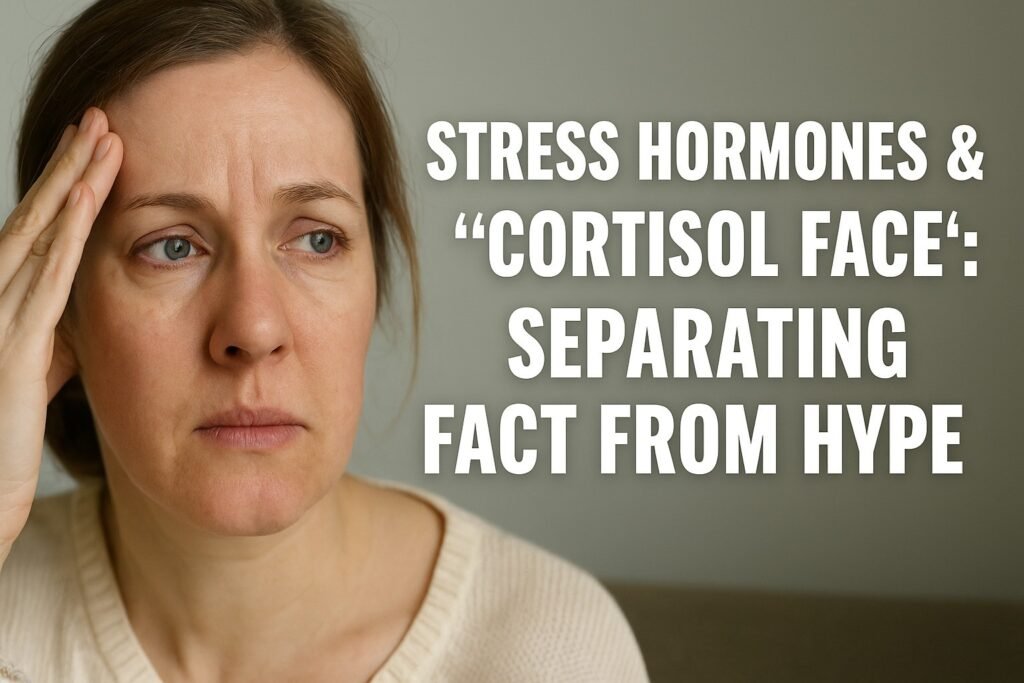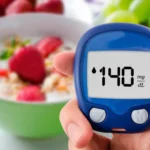Stress is not just an emotion—it’s a biological response. When deadlines loom, when bills pile up, or when life throws unexpected challenges our way, our bodies react by releasing stress hormones. Chief among them is cortisol, often called the “stress hormone.” While cortisol is essential for survival, helping us respond to immediate threats, long-term exposure to high levels can wreak havoc on both body and mind.
Recently, a buzzword has been making the rounds on social media and in wellness circles: “cortisol face.” Influencers and even some health coaches claim that stress can be seen in your facial features—round cheeks, puffiness, or premature aging—attributed to chronically elevated cortisol. The term has gone viral, but how much truth lies behind it? Can cortisol really reshape your face, or is it another internet-driven oversimplification of complex science?
In this article, we’ll explore the relationship between stress, cortisol, and physical appearance, separating fact from hype. We’ll also dive into practical strategies for keeping cortisol in check and protecting both your health and your skin.
Understanding Cortisol: The Stress Hormone
What is Cortisol?
Cortisol is produced by the adrenal glands, located above the kidneys. It plays several crucial roles:
- Regulating metabolism and blood sugar.
- Controlling inflammation.
- Supporting memory formation.
- Helping the body respond to stress.
In healthy individuals, cortisol follows a daily rhythm—rising in the morning to help you wake up and tapering off at night to support sleep.
When Cortisol Goes Awry
Chronic stress disrupts this rhythm. Instead of a gentle wave, cortisol levels may stay elevated or spike unpredictably. Over time, this imbalance contributes to issues like:
- Weight gain (especially abdominal fat).
- Insomnia.
- High blood pressure.
- Impaired immunity.
And, according to emerging conversations, changes in physical appearance.
The “Cortisol Face” Concept
What People Mean by It
The term “cortisol face” is used online to describe physical features believed to result from high cortisol:
- Puffy, round cheeks.
- Dark under-eye circles.
- Breakouts or dull skin.
- Visible signs of premature aging.
Medical Reality: Cushing’s Syndrome
In extreme cases, elevated cortisol does cause noticeable facial changes. Cushing’s syndrome, a condition of chronic cortisol excess (due to tumors, medication, or adrenal dysfunction), is characterized by a rounded “moon face,” fat accumulation around the neck, and skin thinning. However, this is rare and medical—not the same as everyday stress.
The Gray Zone
For people without Cushing’s, there is limited direct research linking moderate stress-induced cortisol to distinct “facial features.” Some associations exist—like increased inflammation, fluid retention, and accelerated aging—but the viral shorthand oversimplifies the science.
How Stress Hormones Affect Appearance
1. Inflammation and Skin Breakouts
Stress increases inflammatory chemicals in the body, making skin more reactive. Cortisol also stimulates oil glands, which can lead to clogged pores and acne flare-ups.
2. Collagen Breakdown and Wrinkles
Chronically high cortisol slows collagen production, the protein responsible for skin elasticity. Over time, this can contribute to sagging, fine lines, and a tired look.
3. Fluid Retention and Puffiness
Cortisol influences fluid balance. Higher levels can cause temporary puffiness under the eyes or in the face, which may explain why some associate stress with a “swollen” appearance.
4. Sleep Disruption and Dark Circles
Poor sleep is both a cause and consequence of elevated cortisol. Lack of quality rest can lead to visible under-eye bags and dull, uneven skin tone.
5. Weight Redistribution
Stress-related weight gain, particularly around the midsection and face, is linked to cortisol’s effect on fat storage. While subtle compared to medical syndromes, long-term stress can alter how the body stores fat.
The Role of Lifestyle Factors
While cortisol may play a role, appearance changes often reflect a combination of stress-driven behaviors rather than cortisol alone.
- Diet: Stress increases cravings for sugary, high-fat foods, which affect weight and skin health.
- Sleep: Late nights and disrupted sleep cycles compound facial fatigue.
- Alcohol & Caffeine: Both are common coping tools but can worsen puffiness and dehydration.
- Neglecting Skincare: Busy, stressed individuals may skip routines that keep skin healthy.
In other words, “cortisol face” may be as much about lifestyle fallout as about hormones themselves.
Can You Really “See” Stress on Someone’s Face?
Science does suggest that people can perceive stress in facial features. Studies show that chronic stress and depression are associated with signs of accelerated aging, such as wrinkles and graying hair. However, these changes occur gradually and are influenced by many factors—genetics, environment, and lifestyle—not just cortisol.
So, while stress can manifest physically, reducing it to a catchy phrase like “cortisol face” is misleading.
Strategies to Manage Cortisol and Protect Skin
1. Prioritize Sleep
Sleep is the body’s reset button. Consistently poor rest keeps cortisol elevated. Aim for 7–9 hours with a calming bedtime routine.
2. Eat for Hormone Balance
- Include whole foods, lean proteins, vegetables, and healthy fats.
- Reduce added sugars and processed foods that spike blood sugar and stress hormones.
- Incorporate anti-inflammatory foods like berries, fatty fish, and green tea.
3. Exercise—But Don’t Overdo It
Regular activity lowers baseline cortisol, but excessive training can raise it. Balance cardio with strength training and recovery.
4. Practice Stress-Relief Techniques
Meditation, deep breathing, and yoga have all been shown to reduce cortisol. Even 10 minutes daily makes a difference.
5. Protect Skin with Smart Care
- Use sunscreen to prevent stress-induced free radical damage.
- Choose gentle cleansers and moisturizers to support the skin barrier.
- Consider products with antioxidants and peptides to support collagen.
6. Seek Medical Guidance if Needed
If you notice persistent swelling, weight gain, or skin changes beyond normal stress responses, consult a healthcare provider to rule out hormonal disorders.
Frequently Asked Questions (FAQ)
Q1. Is “cortisol face” a real medical diagnosis?
No. The term is mostly used online. In medicine, facial changes from high cortisol are associated with conditions like Cushing’s syndrome.
Q2. Can stress alone make your face round or puffy?
Chronic stress may contribute to puffiness through fluid retention, sleep loss, and lifestyle changes, but extreme facial changes are rare outside medical conditions.
Q3. How quickly can stress affect skin?
Some effects, like breakouts or dullness, may appear within days of high stress. Collagen loss or premature aging occurs gradually over months or years.
Q4. What’s the best way to lower cortisol naturally?
Quality sleep, regular exercise, balanced diet, mindfulness, and social connection are proven strategies.
Q5. Should I worry if I see “cortisol face” signs?
Mild changes are common under stress. If symptoms are severe or persistent, seek medical evaluation to rule out underlying conditions.
The idea of a “cortisol face” captures attention online, but the science is more nuanced. While cortisol and chronic stress can indeed affect skin, sleep, and weight, the changes are typically subtle and multifactorial—not a dramatic transformation visible overnight.
Stress is unavoidable, but its impact can be managed. By focusing on sleep, nutrition, exercise, stress reduction, and skincare, you can support both your inner balance and outer glow. The takeaway? Instead of fearing “cortisol face,” think of it as motivation to take care of yourself—mind, body, and skin.





